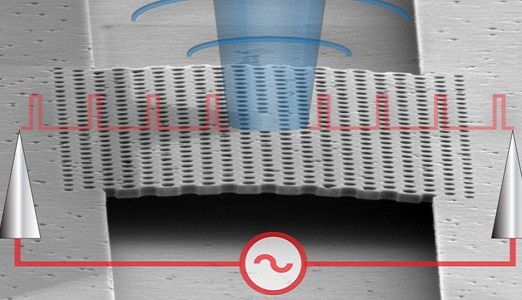Nanophotonics LED achieves ultrafast data transmission rates
on

A team at Stanford's
The researchers say it is a major step forward in providing a practical ultrafast, low-power light source for on-chip data transmission.
Stanford's Jelena Vuckovic, an associate professor of electrical engineering, and Gary Shambat, a doctoral candidate in electrical engineering, announced their device in a research paper set to be published Tuesday in the journal Nature Communications.
Vuckovic had earlier this year produced a nanoscale laser that was similarly efficient and fast, but that device operated only at temperatures below 150 degrees Kelvin, about minus-190 degrees Fahrenheit, making it impractical for commercial use. The new device operates at room temperature and could, therefore, represent an important step toward next-generation computer chips.
Nanophotonics is key to the technology. in the heart of their device, the engineers have inserted little islands of the light-emitting material indium arsenide, which, when pulsed with electricity, produce light. These "quantum dots" are surrounded by photonic crystal – an array of tiny holes etched in a semiconductor. The photonic crystal serves as a mirror that bounces the light toward the center of the device, confining it inside the LED and forcing it to resonate at a single frequency.
The new device includes a bit of engineering ingenuity, too. Existing devices are actually two devices, a laser coupled with an external modulator. Both devices require electricity. Vuckovic's diode combines light transmission and modulation functions into one device, drastically reducing energy consumption.
Both devices require electricity. Vuckovic's diode combines light transmission and modulation functions into one device, drastically reducing energy consumption.
In tech-speak, the new LED device transmits data, on average, at 0.25 femto-joules per bit of data. By comparison, today's typical "low" power laser device requires about 500 femto-joules to transmit the same bit.
Source: Andrew Myers on


Discussion (0 comments)